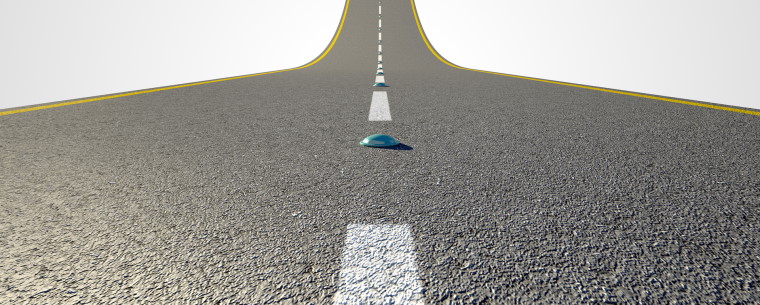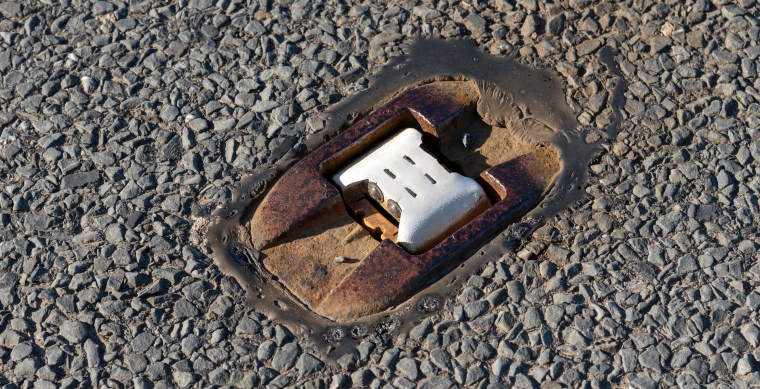Everything You Need to Know About Catís Eye Reflectors
Jack Dreyer | Friday 20th May 2022 12:15pm

Everyoneís seen them driving along roads Ė at times, it seems like they see you. The small dots of light that seem to pop up out of nowhere in front of headlights and then disappear are everywhere on British roads, but what exactly are catís eye reflectors? Letís find out.
Who invented the catís eye reflector?
The catís eye reflector road stud was invented by Brit Percy Shaw in 1934. He realised when some tram rails were removed from a local road that heíd been using their reflectivity to gauge the side of the road at night. Other stories tell of him narrowly avoiding a crash when a cat at the side of the road looked in his direction.
Regardless of whatís the one true story, whatís undeniable is that catís eye reflectors have become a staple throughout the world for safety on the roads over the years.
How do catís eye reflectors work?
While their construction and design vary slightly, the fundamental concept is a domed glass tube known as a Ďretroreflectorí Ė what this means is that it reflects light in a very directional way back to a light source (such as car headlights).
These tubes are embedded in a flexible rubber housing that itself is seated within a cast iron housing Ė more on that later.
This rubber housing is designed to hold the tubes above ground level so that theyíre easily visible, and theyíre also designed to squish down when cars drive over them.
This has the effect of lessening damage to tyres, but also of cleaning the glass lens. As the housing squishes down, it rubs the lens against a non-moving part that helps to wipe off any accumulated grime. An updated patent from Shaw also incorporated a rainwater reservoir to hold a small amount of rainwater that helps to Ďwashí the lenses.
Now, the rubber housing is sat within a cast iron base that is itself embedded in the road surface Ė this helps to take a good portion of the overall weight of a car passing over it and therefore protect the other components.

Coloured catís eye reflectors
A great feature of reflectors being made from glass is that they can be coloured! Which colours are used for different purposes vary from country to country, but in the UK we use white, red, amber, and green. But what do they mean?.
- White denotes lane divisions & centre marking of roads.
- Red & amber are used for lines that canít be crossed, such as the edge of the road.
- Green is used for lines that can be crossed, such as slip roads of entrances to lay-bys.
Can catís eye reflectors be dangerous?
Thereís a concern that catís eyes can be dangerous either when driving over them or as they deteriorate.
In some countries, reflectors are housed in hard plastic and nailed into roads Ė which is certainly something to be avoided! But in the UK theyíre almost always set into the road with cement or tar, so are perfectly safe to drive over.
Now, some models can be prone to have the glass tubes flick out Ė but this is only after the rubber housing has significantly perished through years of sun exposure. Even then, the glass tubes arenít very likely to damage your tyres because theyíre made smooth to make them more reflective. That is, there arenít any sharp bits to actually puncture your tyre.
And thereís also very little danger of them being kicked up. While not impossible, and thereís certainly one grizzly case, the glass tubes usually end up being gradually kicked over to verges when they become unseated.
Installing catís eye reflectors
Catís eye reflectors are installed either when the road is laid or retrofitted by drilling out a hole in the tarmac. From here, they can be set in with some sort of tar mixture to enable them to stay flexibly in the road while also accounting for weather fluctuations.

How have they helped?
By being able to have safe guidance on roads at night-time, catís eye reflectors have significantly improved general road safety and dramatically reduced road deaths worldwide. This also has a knock-on effect on economics as businesses are able to reliably operate, for example in the transport and haulage, overnight while keeping their drivers safe.
The alternative, simply lighting up every road with street lights, is a much more expensive, much less eco friendly alternative. Street lights are great for humans, but not so great for wildlife, insects, and birds!
Had problems with catís eyes and your tyres?
While weíve said itís unlikely, itís not impossible to damage your tyres on catís eye reflectors Ė head to your local Kwik Fit branch for a replacement or book a slot online.
Any facts, figures and prices shown in our blog articles are correct at time of publication.
Featured Articles
Is it Illegal to Drive With One Headlight?
Saturday 19th July 2025
Wondering if itís illegal to drive with one headlight? Learn about the safety risks and penalties of illegal blown bulbs and why you should fix them promptly.
Air Con in EVs & Hybrids: Experts Answer Your Questions
Monday 30th June 2025
Does air con drain EV batteries? Can you use the air con while charging an electric car? Find out the answers to these questions & more from Kwik Fitís experts.
Why Is Your Car Making a Noise? Fixes & Tips
Friday 13th June 2025
When your car starts making unexpected noises, it can certainly be quite disconcerting; it may be nothing to worry about, but hereís what you need to know.









